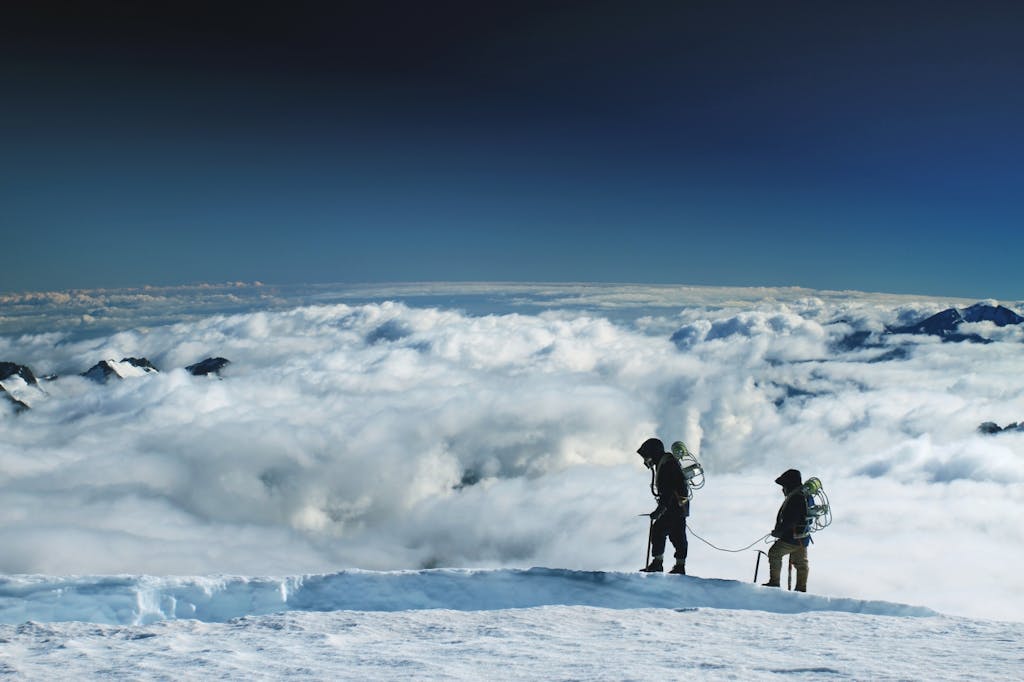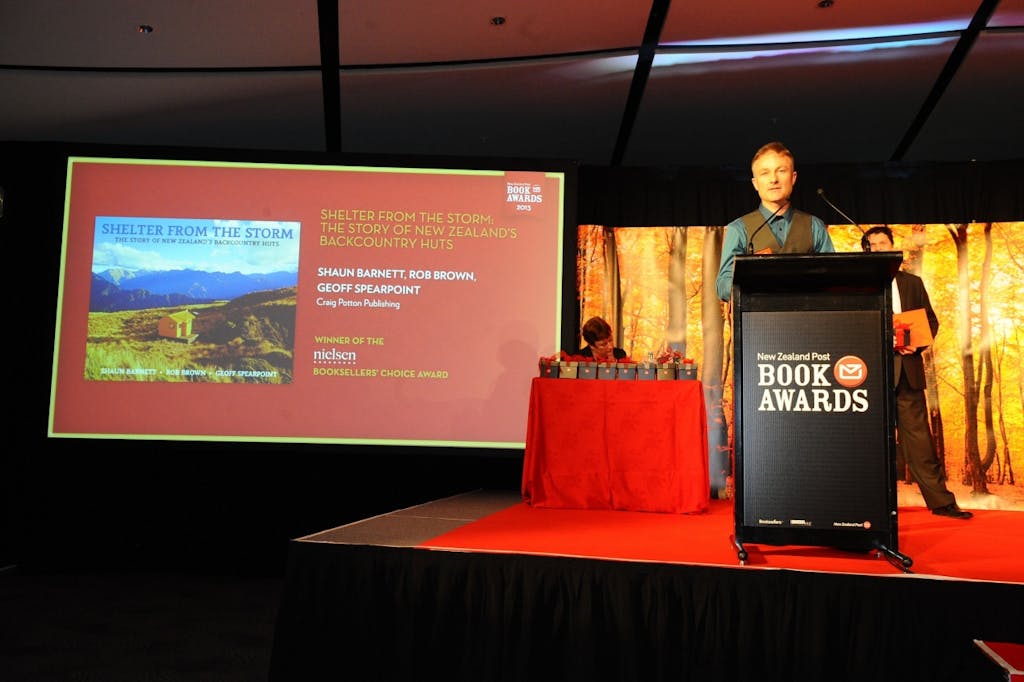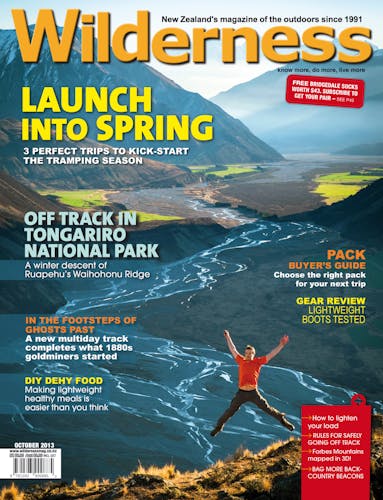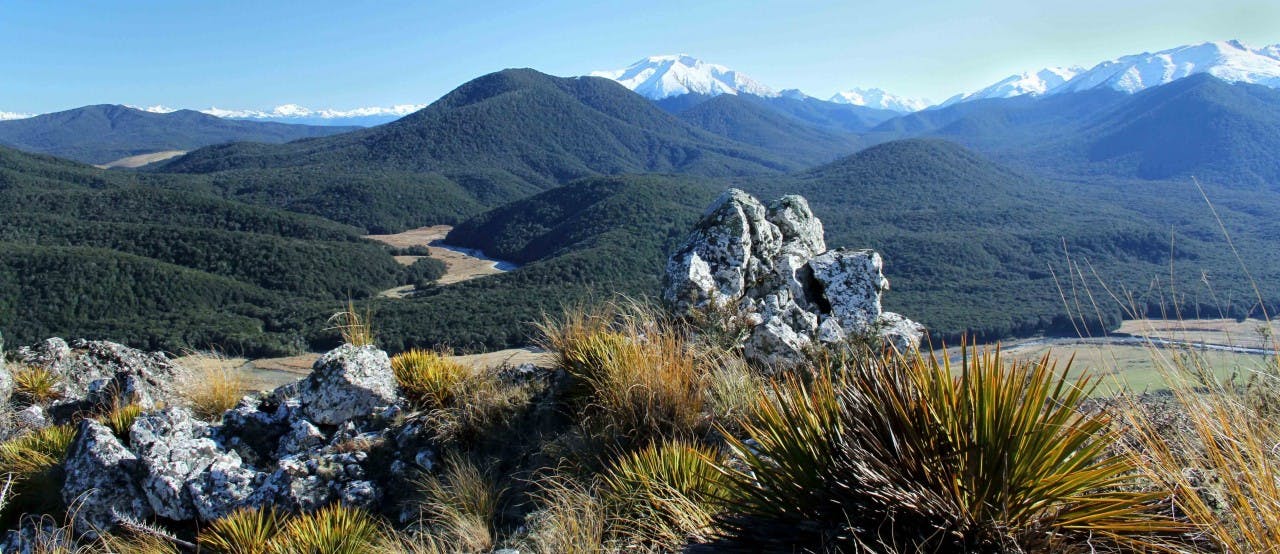Greenstone and Caples under threat if monorail approved
One monorail in Fiordland could easily lead to two or three, according to campaigners who have noticed a clause allowing similar developments to be built.
Save Fiordland and Otago Conservation Board has discovered that Ngai Tahu would have a legal right to build a monorail or gondola in the Greenstone and Caples valleys if the Snowdon Forest monorail gets the go ahead.
The clause is written in the Ngai Tahu Deed of Covenant, attached to the Deed of Settlement, which says the Minister for Conservation couldn’t withhold consent to a similar scheme on Ngai Tahu land if the monorail was approved. Ngai Tahu own land in the Greenstone and Caples valleys.
This deeply worries Daphne Taylor, of Save Fiordland: “It may be that Ngai Tahu would never put a proposal in, but it’s important to make people aware that it is feasible. Allowing the monorail could open up a can of worms.
“Snowdon Forest has World Heritage status which means it’s not appropriate for any such development. It’s devastating that it’s even being considered.”
Bill Jarvie, chair of Save Fiordland, said: “The reality is that the clause is there in black and white. The only reason it would have been put into the settlement is because of a request from Ngai Tahu that if it’s good enough for everyone else to build there, they should have a piece of the pie too.
“This should have been revealed to the public from the start – the great majority of the public would have had no idea of this consequence.”
The monorail proposal is part of the Fiordland Link Experience, which intends to provide a scenic trip from Queenstown to Te Anau Downs via a combination of catamaran, bus and monorail. The monorail wouldn’t travel through Fiordland National Park, but would cut through part of a World Heritage site.
Beyond the Edge

‘Beyond the Edge’ chronicles the successful ascent of Everest by Hillary and Norgay.
We all know that a bee keeper from New Zealand was the first person to stand atop the world’s highest mountain. We also know that he was accompanied by a hardy Sherpa.
But it’s hard to imagine what a horrendous ordeal such an expedition could have been – the empty crevasses, the falling slabs of ice, the avalanches, the blood numbing wind, the nausea-inducing altitude.
Now, a New Zealand-made documentary film puts you in the shoes of those who became the first to reach the top.
Beyond the Edge tells the full engrossing story of the expedition, cleverly entwining original footage with new. The 3D experience, apart from providing stunning vistas, brings home the hostility of the terrain and makes you feel like you’re with the expedition itself, sharing the suffering and ultimate elation.
Director Leanne Pooley told Wilderness that the prospect of delivering such a well-known tale to the screen was a challenging one. “It was daunting. I feel an extraordinary responsibility to do the story justice, not just to Ed but to our whole cultural identity. It was important to me we told it in a way that we all feel good about.
“Everyone knows how the story ends so I couldn’t make it a mystery, so I had to take the audience on a journey with Tenzing and Sir Ed so they could appreciate what it took.
“In a funny sort of way the gloss has come off Everest. There’s this notion that everybody and their dog can do it, so I wanted people to see how hard it really was back then but I also wanted them to feel it as well. That’s why we made it in 3D.”
The film is narrated by climbers, family members of those in the expedition and Sir Edmund Hillary himself from archive interviews. At one point Sir Ed recalls the time he fell into a crevasse, only to be saved by Tenzing, who was attached to Hillary by rope, by securing the rope using his ice axe. “People say I must be very thankful to Tenzing for saving my life,” says Hillary. “But I wasn’t really. I’d have been very annoyed if he hadn’t saved my life.”
Pooley said she didn’t want the film to split between mountain scenes and interviews: “One of the reasons we didn’t cut to the interviews is because we just wanted viewers to stay on the mountain.
“It had always been the plan to mix old and new footage. I wanted it to feel authentic so people were hearing it from the horse’s mouth and getting a feel for what it was like.”
One of the most striking things about the movie is the uncanny resemblance of actors Chad Moffitt and Sonam Sherpa to Hillary and Tenzing.
“We wanted the movie to be seamless,” said Pooley. “We all know what Sir Ed looks like and it really wouldn’t have worked very well if the actor didn’t look a lot like him – the sense of seamlessness would have gone.
“When Chad walked into the room for the audition I couldn’t believe it. I said a little prayer hoping he could act, which of course he can. Even when Peter Hillary first saw him he said ‘holy sh..’!”
“Chad’s personality has so much in common with Sir Ed – he’s a very humble guy, but at the same time very focussed and the more we were on the mountain the more he grew into Ed’s boots.”
“In regards to Sonam, we were in Mount Cook Village he was working in the restaurant at the Hermitage and I looked across the room and said ‘my God, that man looks a lot like Tenzing Norgay’ and it turned out he’s a distant relative.
“I thought that to cast Tenzing we’d have to go to Nepal or Tibet, so to find a man who’s a Sherpa living in New Zealand who looks so much like Tenzing Norgay just seemed ridiculously lucky.”
Cinematographer Mark Whetu summitted Everest to get the shots of the whole journey. The film crew chose to film the action shots on Aoraki/Mt Cook because of the geographical similarities between the two mountains.
Having now studied and portrayed Hillary’s life in some detail, Pooley has built her own opinion of who Sir Ed actually was: “Some people have asked if he was a super hero. I think he was the opposite of a super hero – he was a pretty ordinary fella who was put in an extraordinary situation and he stepped up like we all hope we might do. But Sir Ed was also ambitious – he wasn’t backward in coming forward – he wanted a shot at the top.”
Beyond the Edge has just made its debut at a sell-out event at the Toronto Film Festival, receiving the thumbs up from Hillary’s son Peter and Norgay’s son Norbu.
The movie will have a New Zealand premier in Wellington’s Embassy Theatre on October 22 before being released in cinemas on October 24.
Hut book wins award

Shaun Barnett accepted the Booksellers Choice Award on behalf of his co-authors
The book Shelter from the Storm about New Zealand’s backcountry huts won the Booksellers’ Choice Award at the New Zealand Post Book Awards last month.
Co-written by trampers Shaun Barnett, Rob Brown and Geoff Spearpoint, Shelter from the Storm is the first wide-ranging history of New Zealand’s hut network.
Shaun Barnett received the award and told Wilderness he’s pleased an important part of New Zealand’s outdoor heritage is getting recognition.
“It’s quite a big and chunky book so it’s easy for retailers to display and promote,” Barnett said. “It also has broad appeal to a whole cross section of the population whether farmers, trampers, hunters or climbers.
“It’s not just a book about huts, but is about broader social dimensions told through the filter of our huts.”
Published in 2012, the book provides an overview of who built the huts as well as why they were built. The book has sold more than 5000 copies and is into its third print run.
The Booksellers’ Choice Award is selected by book retailers around the country.
Wilderness is offering a special discount rate on Shelter form the Storm during the month of October. Buy it from our online book store for just $70 – a saving of $9.99 on the recommended retail price.
Foreigners and businesses should help fund DOC, say Wilderness readers
Fees for foreigners, all-park passports and online donations are just some of the many ways you think would help the Department of Conservation raise more pennies.
DOC is currently looking for ways to increase its funding at a time when budgets have fallen, so we asked you how it should be done.
Hundreds of Wilderness readers answered our survey, and now we’ve collated the results.
Most readers (85%) believe private businesses have a role to play, but an even greater number (89%) believe non-business-based funding should also be discussed.
As far as business funding is concerned, virtually everyone agreed that sponsorship schemes (91%) and funding from tourism operators (96%) are the ways to go, with funding from mining concessions (13%) and energy development (28%) proving far less popular.
Of other methods of filling the piggy bank, creating a park tax for foreign visitors (71%), increasing fines for non-hut payers (51%) and sprinkling donation boxes across parks and in DOC offices (45%), were the most popular.
Our readers also thought more money should come from the Ministry of Tourism with 88% agreeing that this department should contribute more to the front country stuff, such as shelters and car parks at the start of Great Walks.
As well as answering multiple-choice questions, respondents could add ideas of their own for how DOC should increase its funding. Popular suggestions were tax hikes and extra charges for foreign visitors, perhaps charging them higher hut fees.
Other suggestions included:
- “An all-park passport at a reasonable rate”
- “Online donations to DOC”
- “Privately funded huts on DOC land”
- “Taxing businesses that use the environment”
- “Paying an annual fee equivalent to the size of land you own”
DOC’s outgoing director general Al Morrison was encouraged by the results of the survey. “The fact that your readers support DOC building relationships with others appears to reflect a growing understanding that conservation is not just something ‘DOC does’,” he said.
“DOC’s new structure is firmly built around the fact that the department will achieve far more for conservation by working with others than it will ever achieve working on its own.”
For a summary of the results in chart form, visit www.wildernessmag.co.nz
Out with the old, in with the new
This month, Wilderness says a fond farewell to deputy editor Josh Gale, who flies half way around the world to set up a new life in Germany.
Flying the opposite way is his replacement Matthew Pike, who has recently arrived in New Zealand from the UK.
Pike has worked for Trail and Country Walking magazines in the UK and its website LiveForTheOutdoors.com. More recently he has worked as a freelance writer for Wilderness before joining the team full time.
“I wanted to explore the most beautiful parts of the country without costing me a cent,” said Pike.
Also new to Wilderness is Alicia Barnaby, who takes over from Matthew John in the advertising sales department.







